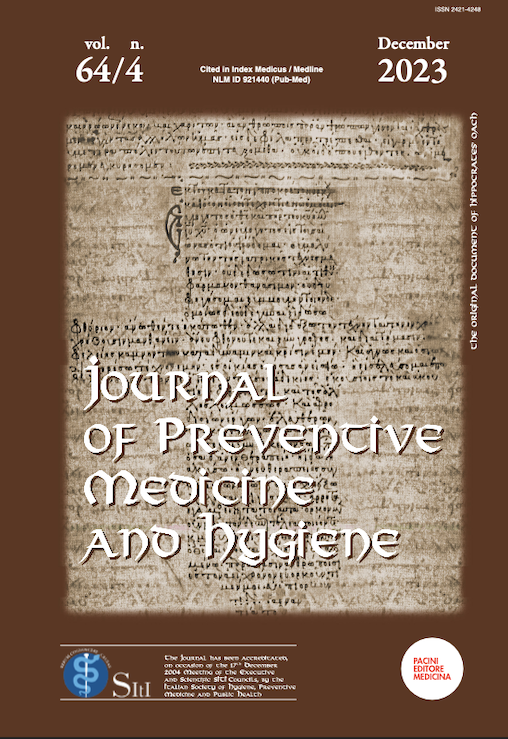Abstract
Background: The language of medicine is constantly evolving, typically to better describe a new understanding of disease, adjust to changing social sensibilities, or simply to reflect a new drug class or category. We address the need for an updated language around monoclonal antibodies, or “mAbs”—a widely used medical term, but one which is now too general to accurately reflect the range of mAb pharmaceuticals, their effects, and the intended patients.
Methods: The question of “what should we call a monoclonal antibody immunisation against respiratory syncytial virus (RSV) to ensure accurate understanding of the product?” was the basis for a virtual advisory panel in May 2022. The panel was convened by Sanofi with the intention of reviewing appropriate language in terminology in the context of mAb-based prophylaxis for RSV. The panel comprised several global experts on RSV and vaccination, a trained linguist specializing in doctor-patient interactions and medical language, and several experts in marketing and communications.
Results: We suggest the term “Direct Long-acting Antibody” (DLA) for a specific sub-class of mAbs for use in prevention of RSV disease in infants. This terminology should differentiate from other mAbs, which are generally not used as therapies in infants.
Conclusions: This change will more accurately convey the specific mode of action of a mAb in infants, and how it could impact the prevention of communicable diseases: this class of mAbs is not an active treatment, but rather will offer direct and rapid protection lasting at least 5 months.
References
Allen LN, Feigl AB. What's in a name? A call to reframe non-communicable diseases. Lancet Glob Health 2017;5:e129–30. doi: 10.1016/S2214-109X(17)30001-3.
Cox C, Fritz Z. Presenting complaint: use of language that disempowers patients. BMJ 2022;377:e066720. doi: 10.1136/bmj-2021-066720.
Maruta T, Matsumoto C. Renaming schizophrenia. Epidemiol Psychiatr Sci 2019;28:262–264. Doi: 10.1017/S2045796018000598.
Fouad Y, Waked I, Bollipo S, Gomaa A, Ajlouni Y, Attia D. What's in a name? Renaming 'NAFLD' to 'MAFLD'. Liver Int 2020;40:1254–61. doi: 10.1111/liv.14478.
Ellison N, Mason O, Scior K. Renaming schizophrenia to reduce stigma: comparison with the case of bipolar disorder. Br J Psychiatry 2015; 206: 341–2. doi: 10.1192/bjp.bp.114.146217.
Desborough MJR, Keeling DM. The aspirin story–from willow to wonder drug. Br J Haematol 2017;177:674–83. doi: 10.1111/bjh.14520.
Caccavale A, Romanazzi F, Imparato M, Negri A, Morano A, Ferentini F. Low-dose aspirin as treatment for central serous chorioretinopathy. Clin Ophthalmol 2010;4:899–903. doi: 10.2147/opth.s12583.
Nilsson SE, Johansson B, Takkinen S, Berg S, Zarit S, McClearn G, Melander A. Does aspirin protect against Alzheimer’s dementia? A study in a Swedish population-based sample aged ≥80 years. Eur J Clin Pharmacol 2003;59:313–19. doi: 10.1007/s00228-003-0618-y.
Piedimonte G, Perez MK. Respiratory syncytial virus infection and bronchiolitis. Pediatr Rev 2014;35:519–30. doi: 10.1542/pir.35-12-519.
Simoes EA. Respiratory syncytial virus infection. Lancet 1999;354:847–52. doi: 10.1016/S0140-6736(99)80040-3.
Demont C, Petrica N, Bardoulat I, Duret S, Watier L, Chosidow A, Lorrot M, Kieffer A, Lemaitre M. Economic and disease burden of RSV-associated hospitalizations in young children in France, from 2010 through 2018 BMC Infect Dis 2021;21:730. doi: 10.1186/s12879-023-08049-7.
Reeves RM, Hardelid P, Panagiotopoulos N, Minaji M, Warburton F, Pebody R. Burden of hospital admissions caused by respiratory syncytial virus (RSV) in infants in England: A data linkage modelling study. J Infect 2019;78:468–75. doi: 10.1016/j.jinf.2019.02.012
Shi T, McAllister DA, O’Brien KL, et al. Global, regional, and national disease burden estimates of acute lower respiratory infections due to respiratory syncytial virus in young children in 2015: a systematic review and modelling study. Lancet 2017;390:946–58. doi: 10.1016/S0140-6736(17)30938-8.
Guimaraes Koch SS, Thorpe R, Kawasaki N, Lefranc M-P, Malan S, Martin ACR, Mignot G, Plückthun A, Rizzi M, Shubat S, Weisser K, Balocco R. International nonproprietary names for monoclonal antibodies: an evolving nomenclature system. MAbs 2022;14(1):2075078. doi: 10.1080/19420862.2022.2075078.
Esposito E, Raya BA, Baraldi E, Flanagan K, Martinon Torres F, Tsolia M, Zielen S. RSV Prevention in All Infants: Which Is the Most Preferable Strategy? Front Immunol 2022;13:880368. doi: 10.3389/fimmu.2022.880368.
Sanofi. European Commission grants first approval worldwide of Beyfortus® (nirsevimab) for prevention of RSV disease in infants. Available at: https://www.sanofi.com/en/media-room/press-releases/2022/2022-11-04-07-00-00-2548492. Accessed on 07/08/2023.
FDA (US Food & Drug Administration). FDA Approves New Drug to Prevent RSV in Babies and Toddlers. Available at: https://www.fda.gov/news-events/press-announcements/fda-approves-new-drug-prevent-rsv-babies-and-toddlers. Accessed on 10/08/23.
Dubé È, Ward JK, Verger P, MacDonald NE. Vaccine Hesitancy, Acceptance, and Anti-Vaccination: Trends and Future Prospects for Public Health. Annu Rev Public Health 2021;42:175–91. doi: 10.1146/annurev-publhealth-090419-102240.
Majid U, Ahmad M, Zain S, Akande A, Ikhlaq F. COVID-19 vaccine hesitancy and acceptance: a comprehensive scoping review of global literature. Health Promot Int 2022;37:daac078. doi: 10.1093/heapro/daac078.
Pollard AJ, Bijker EM. A guide to vaccinology: from basic principles to new developments. Nat Rev Immunol 2021;21:83–100. doi: 10.1038/s41577-020-00479-7.
Lin F, Chen X, Cheng EW. Contextualized impacts of an infodemic on vaccine hesitancy: The moderating role of socioeconomic and cultural factors. Inf Process Manag 2022;59:103013. doi: 10.1016/j.ipm.2022.103013.
Puri N, Coomes EA, Haghbayan H, Gunaratne K. Social media and vaccine hesitancy: new updates for the era of COVID-19 and globalized infectious diseases. Hum Vaccin Immunother 2020;16:2586–93. doi: 10.1080/21645515.2020.1780846.


